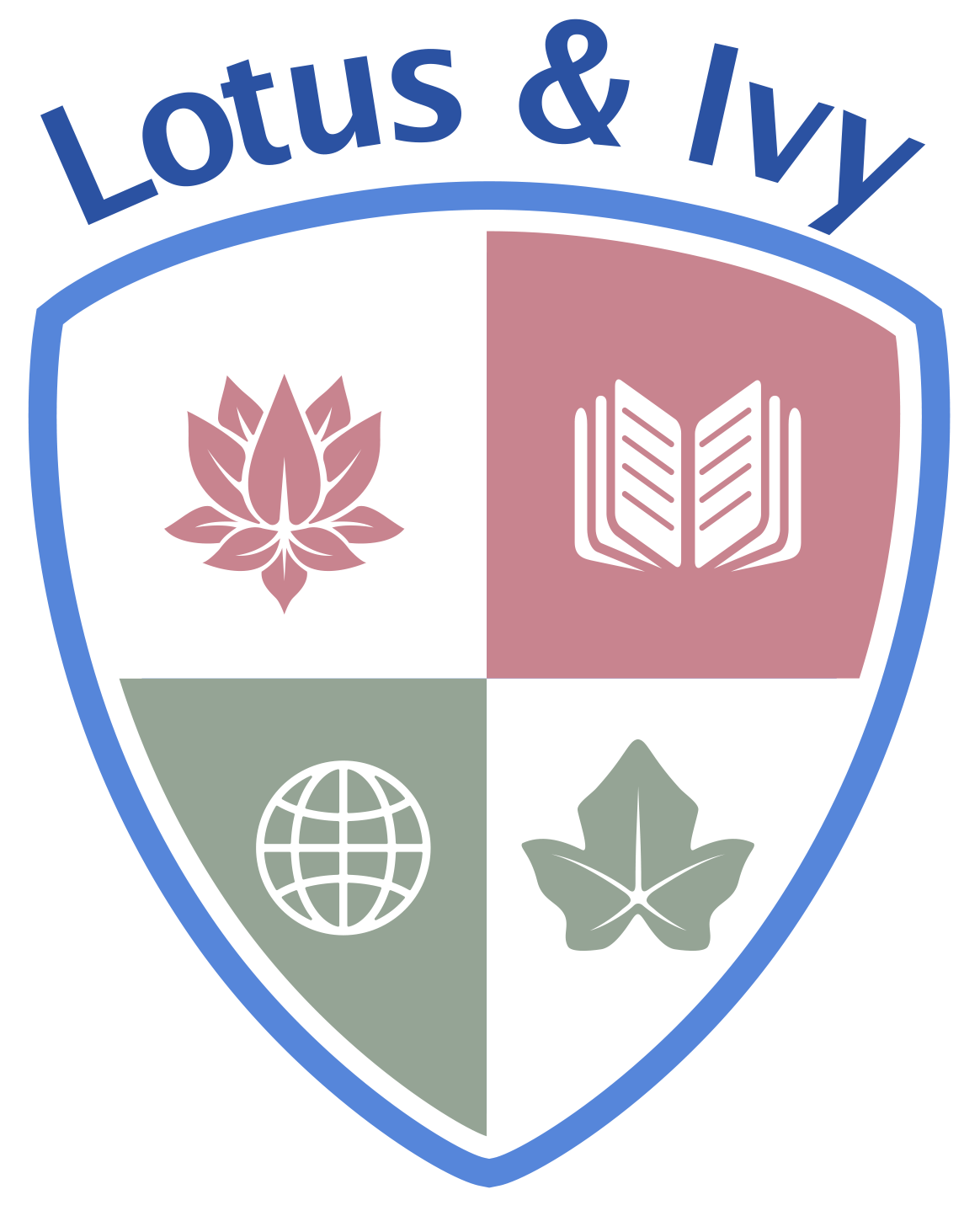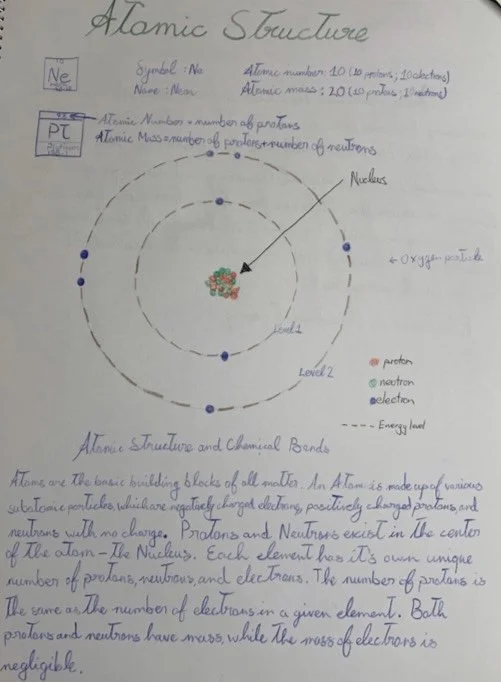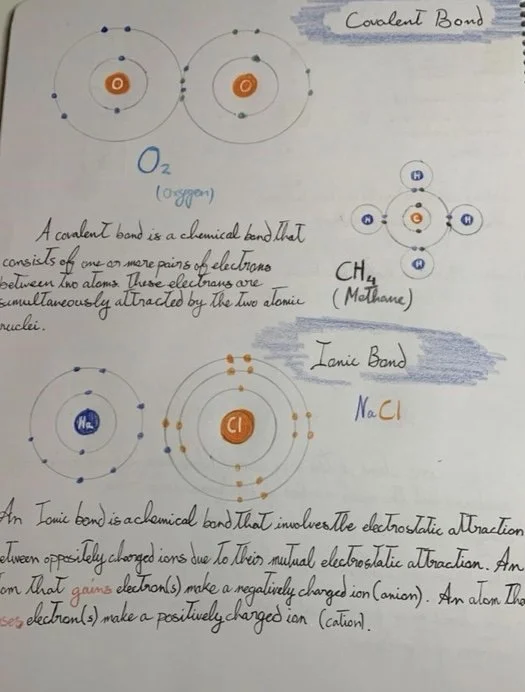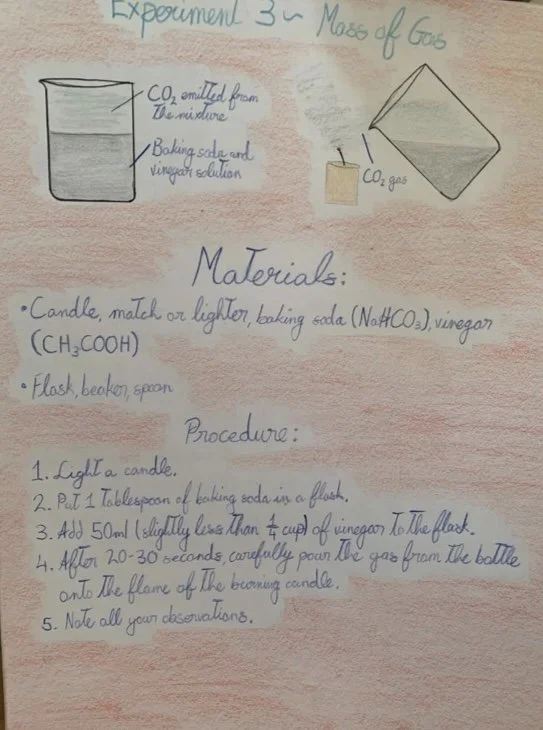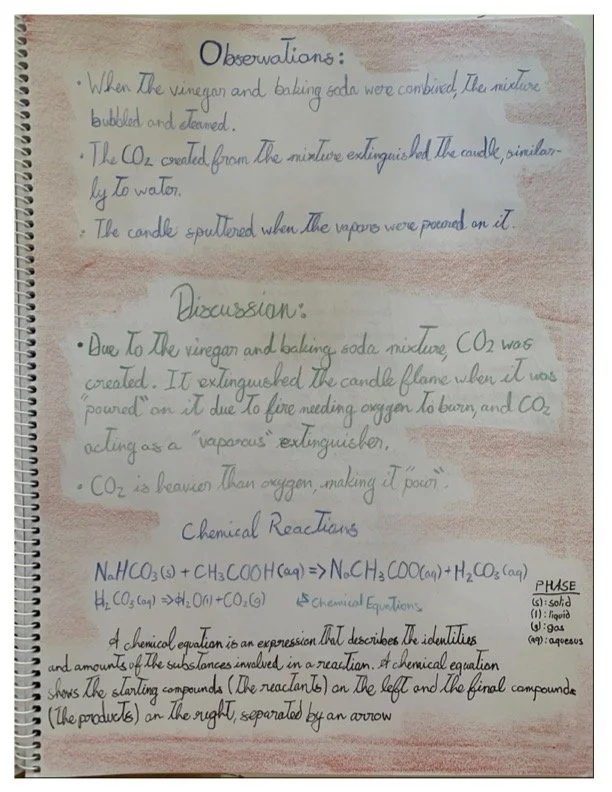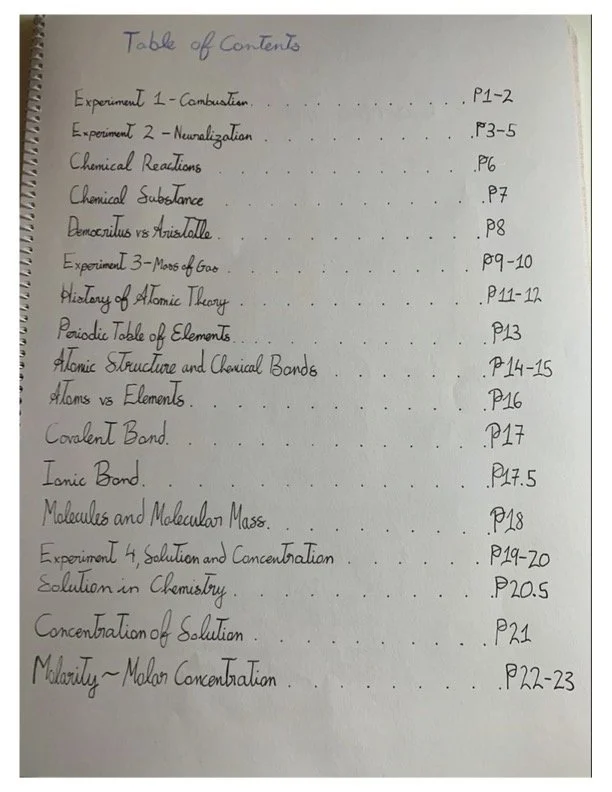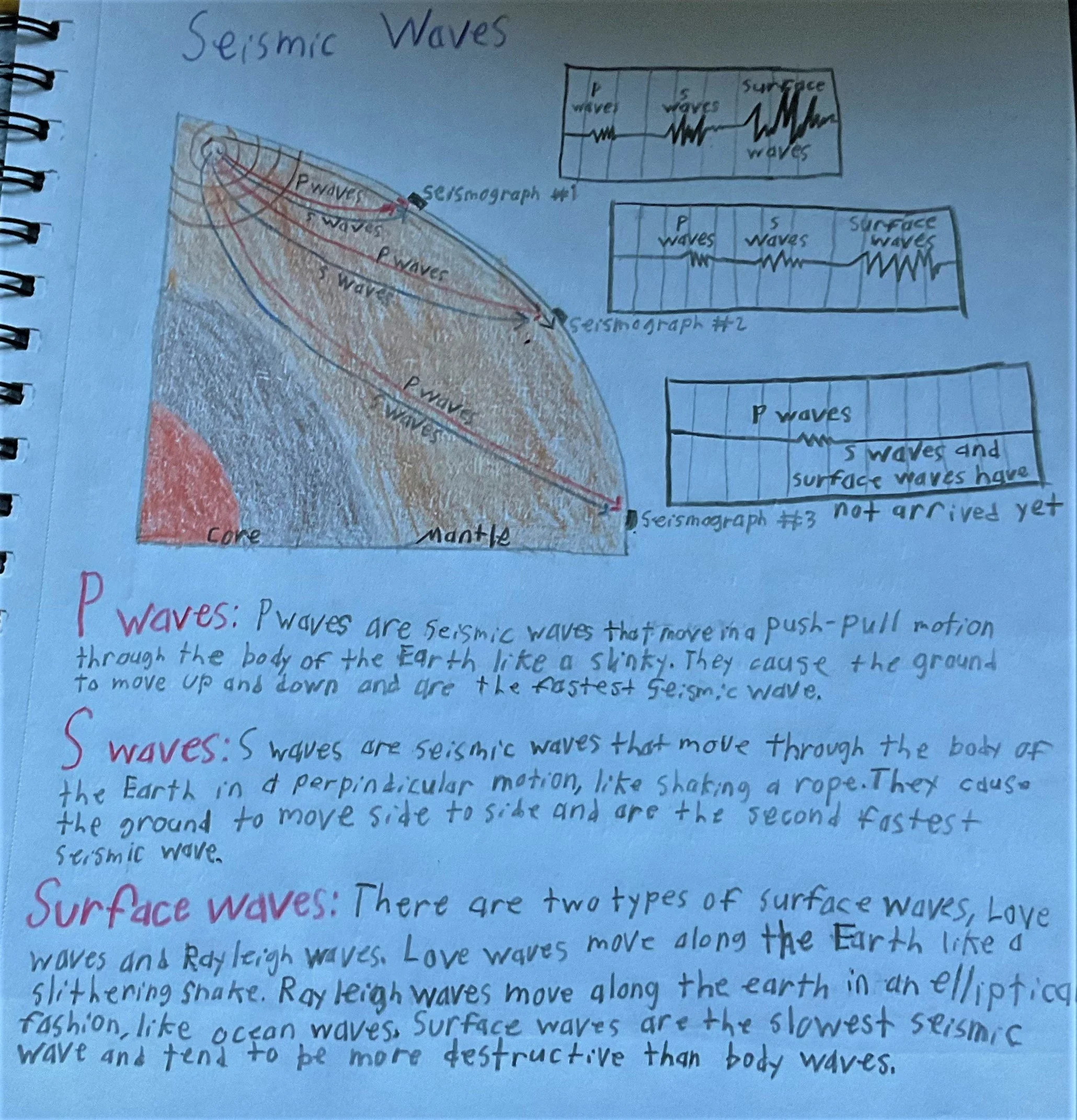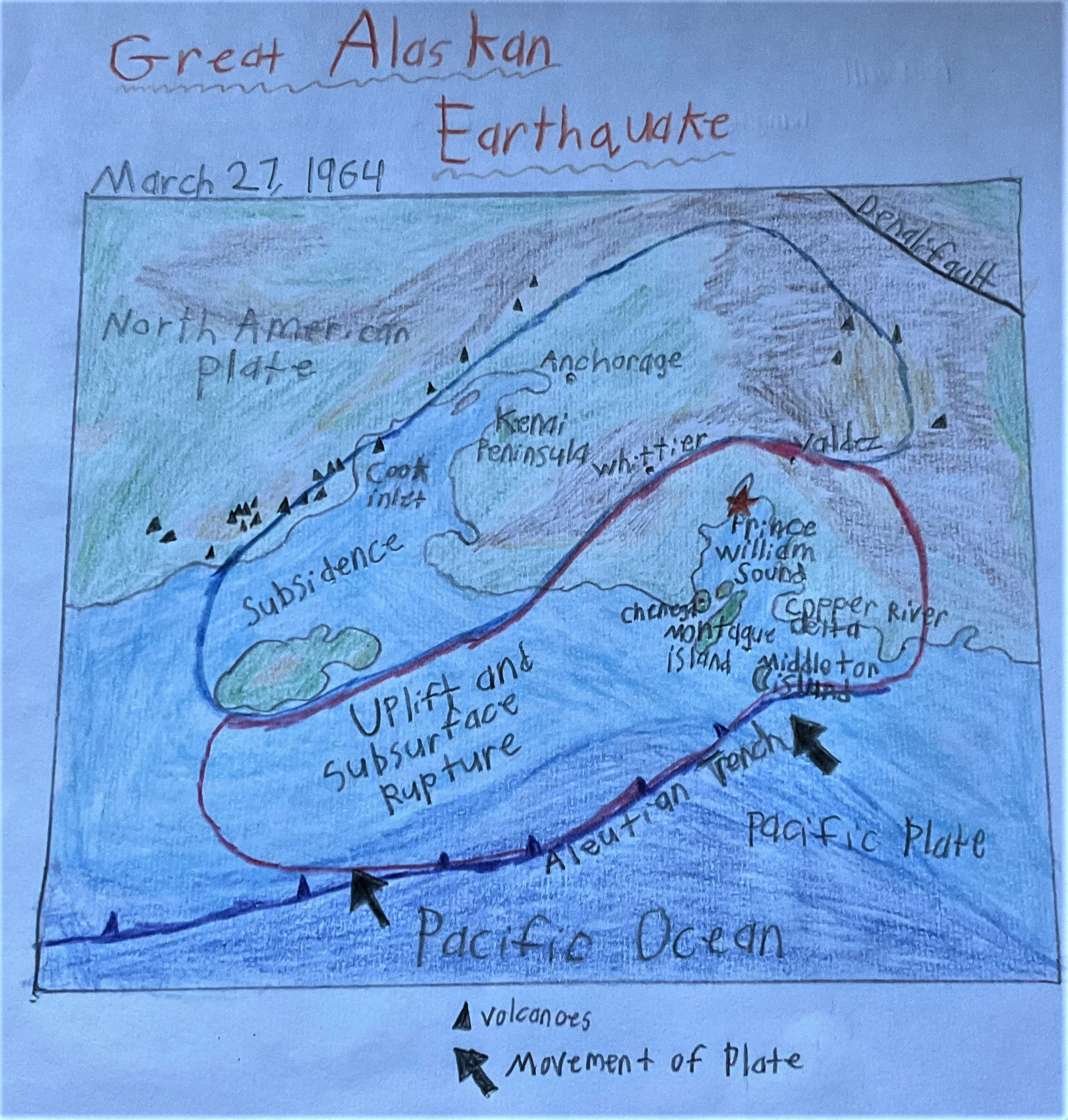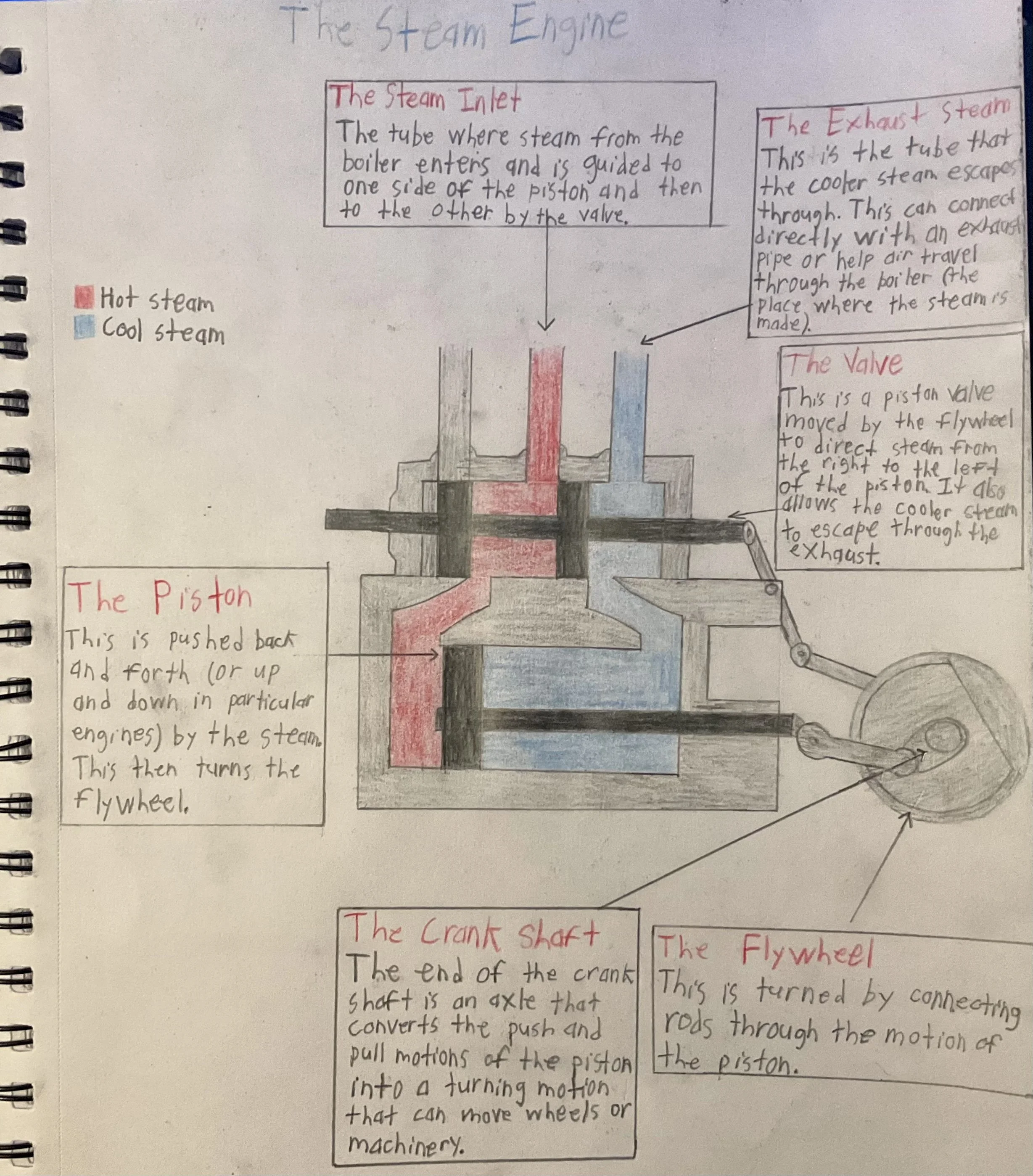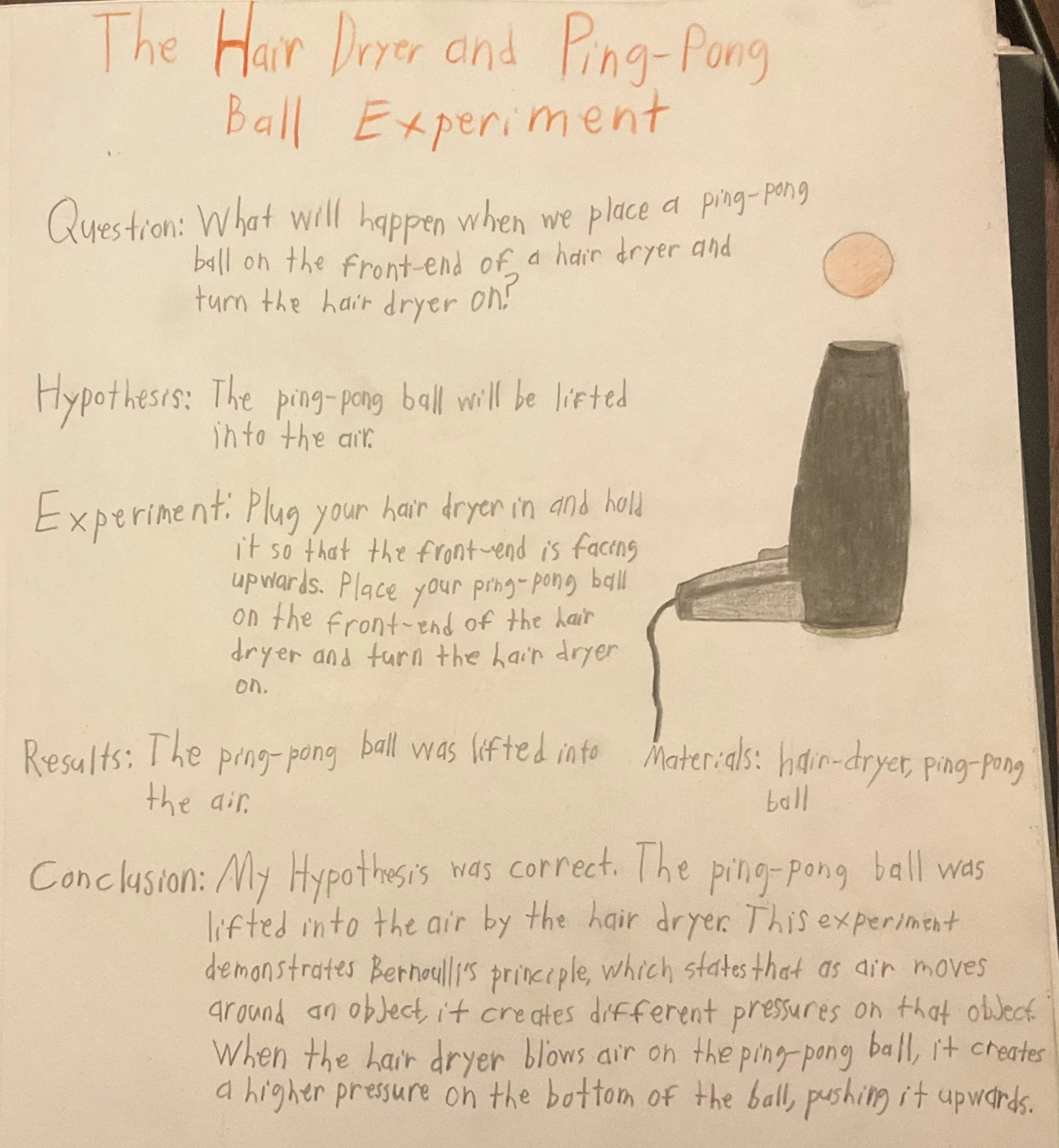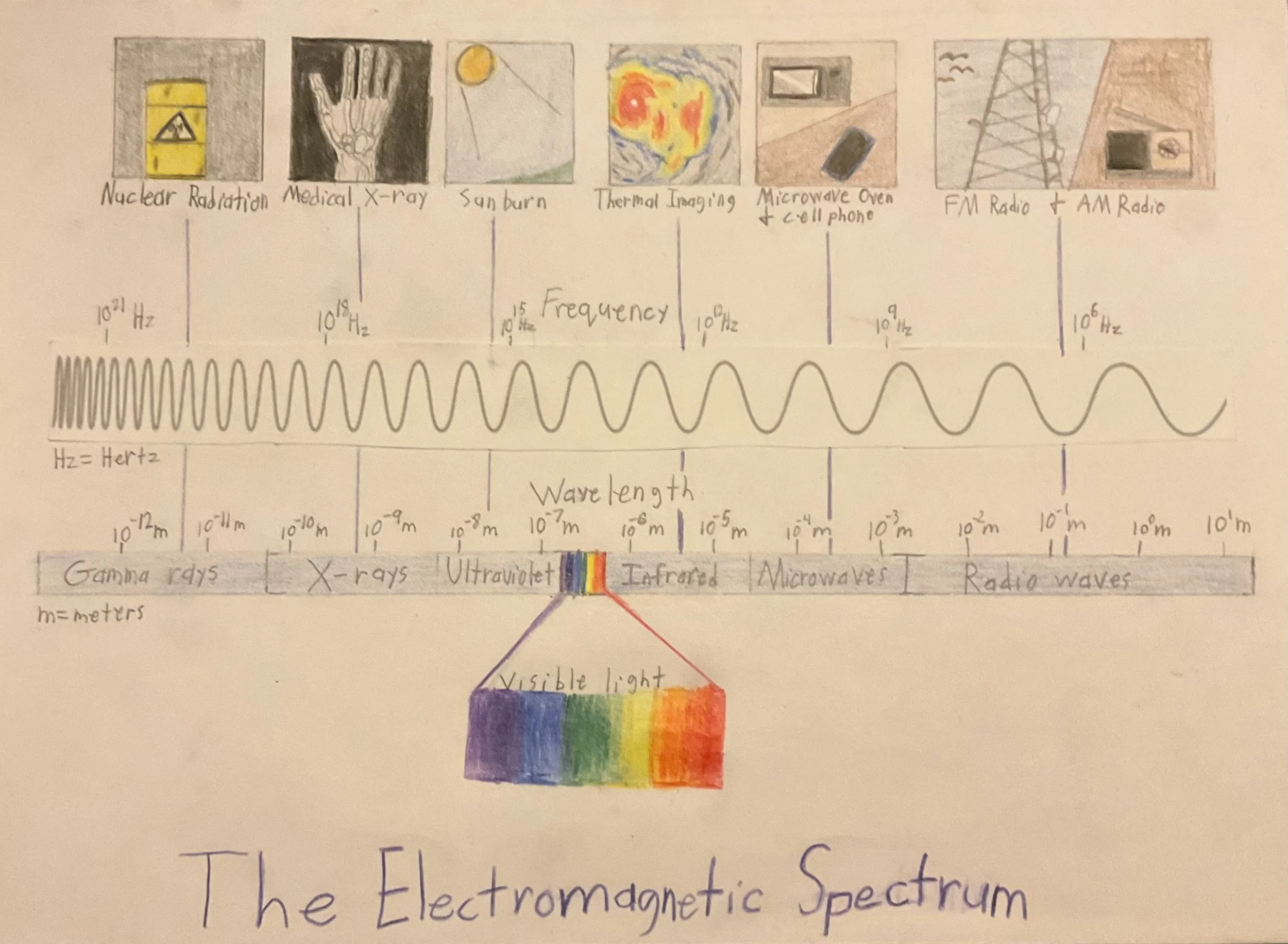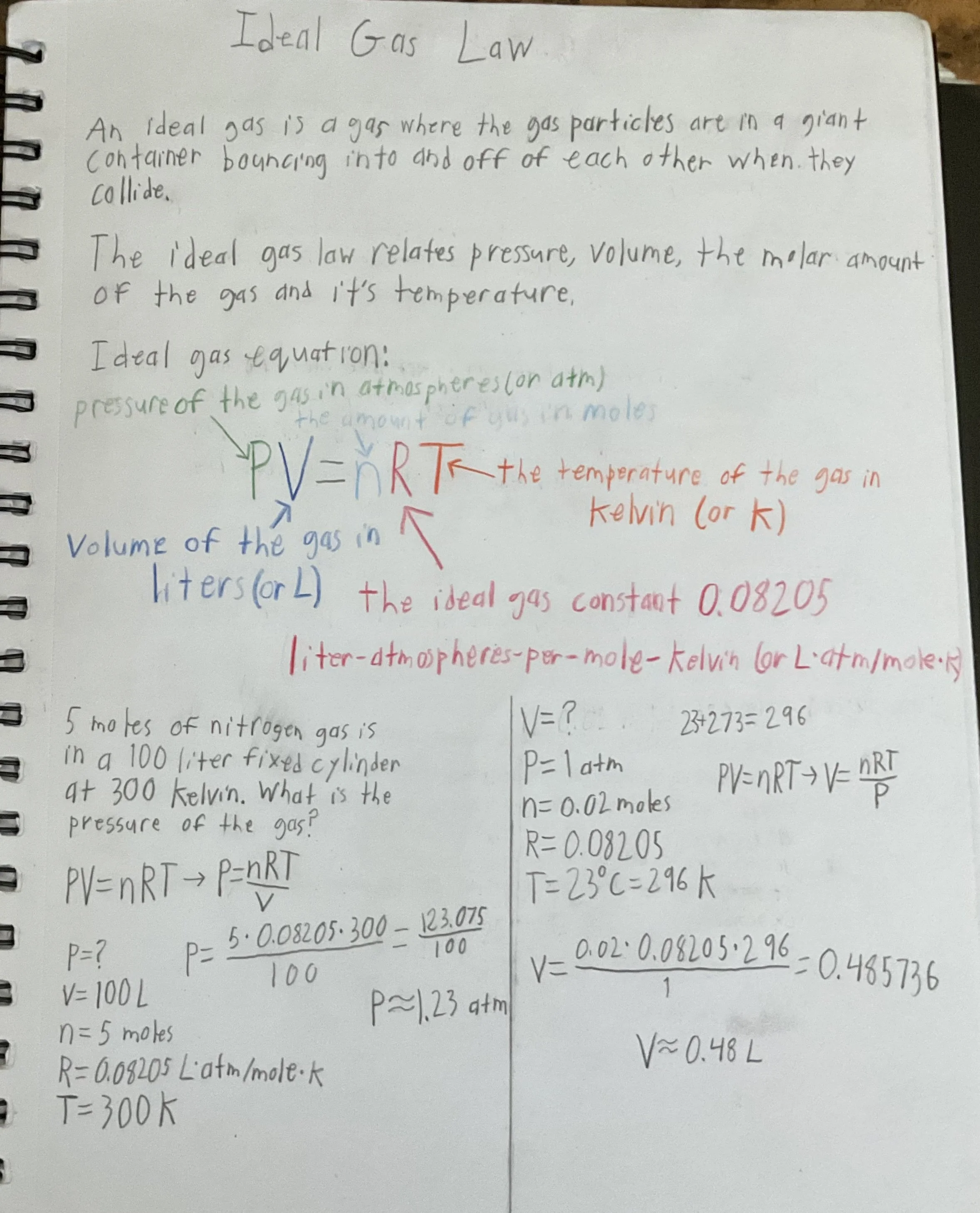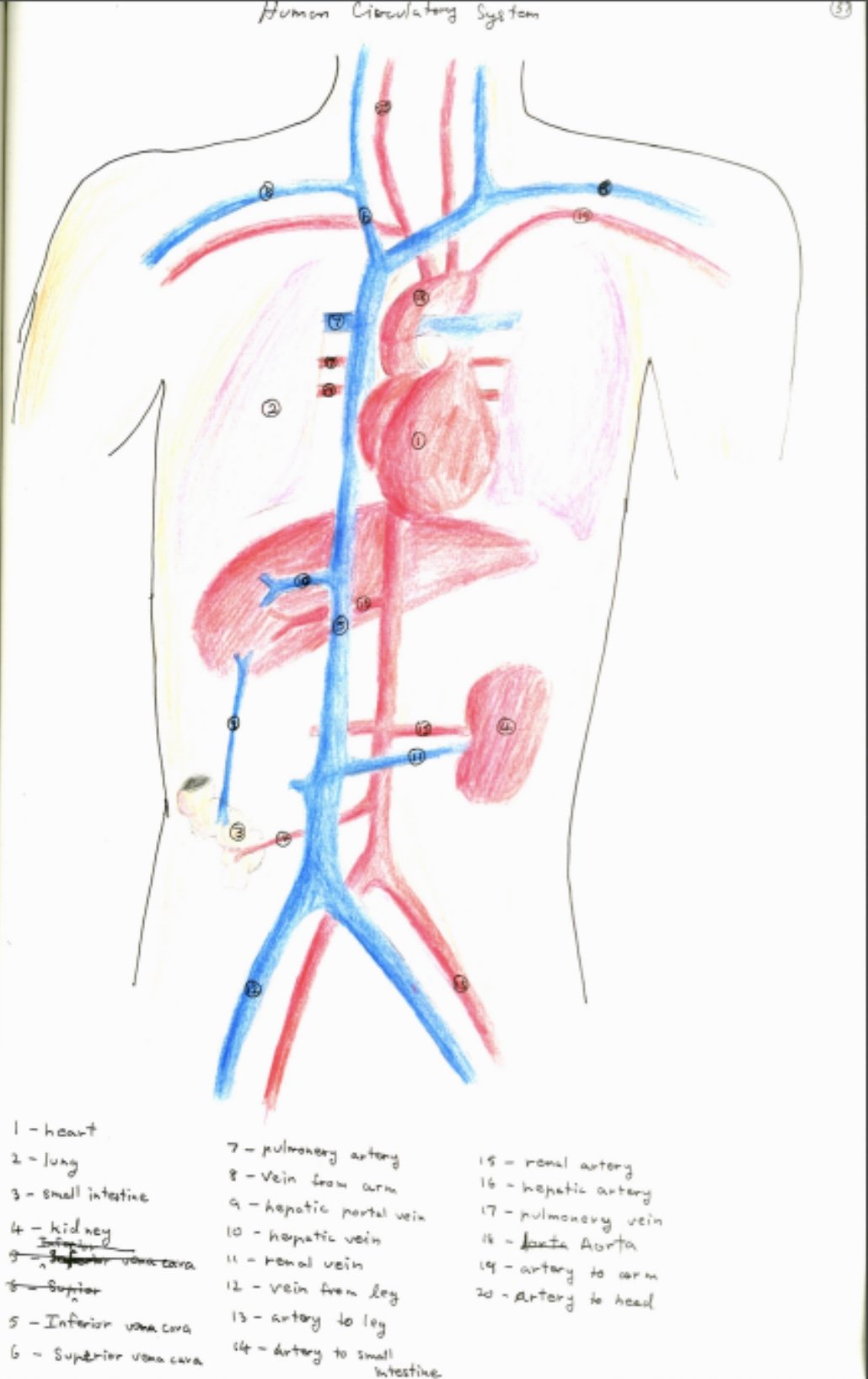Class 9 Main Lesson
The overarching theme for Ninth Grade is “the power of observation” as the curriculum gives the student opportunities to observe, question, and imagine alternatives. An important focus of high school is to develop clear thinking and this starts with the power of observation. The Tenth, Eleventh, and Twelfth grade high school curriculum builds on this foundational high school year and is often summarized with the following questions.
Ninth grade asks “What?,” or more precisely, “What is the world like?” Tenth Grade asks “How?,” Eleventh Grade asks “Why?,” and Twelfth grade asks “Who?” The curriculum culminates in Twelfth Grade when the student synthesizes their knowledge and experience to see their emerging place in the world. They are asked to consider multiple viewpoints as they develop a global consciousness and to ask themselves, “How can I make a difference in the world?”
Developmentally, the Ninth Grader is capable of analytical thought and academic rigor, yet often sees the world in black and white and judges all that crosses their path. Therefore, the coursework in ninth grade explores polarities and contrasts with main lessons like Comedy & Tragedy and Probability & Statistics, mirroring the physical and emotional changes that occur at this stage of adolescence and laying the foundation for the curriculum in subsequent years. The Ninth Grader is capable of and enjoys endless discussion and they love to debate. Dialogue is important in our classes and we make sure the Ninth grade student is met with time for intellectual and social dialogue with their peers. The Ninth Grader has a universal sense of justice and fairness in them, and we look at opportunities to nourish this moral sense through our curriculum.
Ninth Grade Main Lessons
Mythology
Coming soon!
organic Chemistry
In the Class 9 Chemistry Main Lesson block, we explore the structure, properties, and composition of chemical compounds and their reactions in and around us. At first, we conduct a few hands-on experiments to get real experience of chemical substances and their transformation. Based on this experience, we continue to study the history of atomic theory from ancient Greek to modern theoretical physics. This study is extended to examine the Periodic Table of Elements by building the concept of atomic structure and its application. After that, we perform a few more hands-on chemical experiments with both qualitative and quantitative interpretations.
From this direct scientific experience, we derive fundamental concepts in high school chemistry such as atomic structure, atoms and elements, solution in chemistry, molecules, molecular concentration in a solution (molarity), chemical bonds, chemical reactions, chemical formula and equation, and the basis for balancing chemical equations (stoichiometry). By completing this block, each student creates their own Main Lesson book with artistic illustrations and scientific explanations to describe what they have learned.
Experiments are related to:
Combustion
Neutralization
Chemical Reactions
Chemical Substance
Democritus vs Aristotle
Mass of Gas
History of Atomic Theory
Atomic Structure
Periodic Table of Elements
Atoms vs Elements
Chemical Bonds
Molecules and Molecular Mass
Solution and Concentration
Solution in Chemistry
Concentration of Solution
Molarity – Molar Concentration
Comedy & Tragedy
Comedy and Tragedy is a pivotal Main Lesson block in the Ninth Grade Year. We begin with the priestly performance-rituals in the ancient Mystery centers and culminate with the impact of technology and the movies on modern drama. "Drama" is taught not as a subject apart, but rather as a cultural experience that is deeply linked to the artistic, political, economic, and religious forces active in (among others) Sixth Century BCE Athens, the Roman Empire, Elizabethan England, nineteenth century Europe, and twentieth century Broadway and Hollywood.
Topics to be covered include:
Week 1: The nature and roots of Drama; the Greek Mystery Centers: dramatic re-enactments of the myths; Aeschylus, Sophocles, Euripides, Aristophanes; the amphitheatre and the birth of the performing arts; the power of the Chorus in early dramas; the ‘unities’ of time, place and action.
Week 2: Roman Drama: the birth of formulaic comedy and ‘stock’ characters; Medieval Drama: the rebirth of Miracle and Mystery Drama around the cathedrals; Henry VIII’s independence from the Catholic Church and the ascendancy of the English language; the physical and social structure of the London theaters; the life of William Shakespeare.
Week 3: Shakespeare’s Histories: fathers and sons in Henry IV Parts 1 and 2; Shakespeare’s Comedies: twins and namesakes in Twelfth Night; blank verse and rhyming couplets; Shakespeare’s Tragedies: Romeo and Juliet and Macbeth.
Week 4: Shakespeare’s last plays: The Tempest; Modern Drama: the changing nature of theater architecture and design and its effect on how plays were written; Ibsen, Strindberg and Chekhov; the Stage and the Screen, Thornton Wilder.
The students take notes based on teacher presentation of all the above topics. They are guided through essay-writing, completing essays on the Roots of Drama and Shakespeare’s Plays, a Glossary of Greek Drama and a descriptive piece as if they ae living in Elizabethan London and visiting the Globe Theater for the first time.
They draw diagrams showing the development of the Ancient Greek Amphitheater and a Timeline of Western Drama. They will draw a picture of Shakespeare’s Globe Theater. They will watch scenes from Aeschylus’ Agamemnon, Sophocles’ Theban trilogy, and Euripides’ The Bacchae, and they will read and discuss scenes from Callimachus (Hroswitha), Henry IV parts 1 and 2, Twelfth Night, Macbeth, The Tempest, (all by Shakespeare), A Doll’s House (Ibsen), and Our Town (Thornton Wilder).
Earth Science Geology
Students will explore the composition, structure, physical properties, and history of Earth's components, and the processes by which they are shaped. We will also explore, how through the ages, geology has provided essential theories and data that shape how society conceptualizes the Earth. We will consider the impact of humans on the Geology of the Earth and study Continental Drift and Plate Tectonics.
Topics of study include:
Interior of the Earth – Diagram
Interior of the Earth – composition
The Rock Cycle – diagram
Earthquakes – diagram and text
Types of Faults – diagrams
The Great Alaska Earthquake – map
The Great Alaska Earthquake – individually designed page
Fault Zone Metamorphism - diagram and text
Seismic Waves - drawing and definitions
Finding the Epicenter of an Earthquake activity
Measuring earthquakes
Map of the worldwide distribution of earthquakes
Tsunami Formation (independent work)
Volcano Vocabulary Page
Volcano Profile I: Paricutin (diagram/drawing and text)
Volcano Profile II: Mount St. Helens (diagram/drawing and text)
Volcano Profile III: Mauna Loa (diagram/drawing)
Pangea drawing with text
Mid-Ocean Ridge Diagram
Convergent Boundary Diagrams
Transform Boundary Diagram
PROBABILITY & Possibility
This block develops critical thinking and abstract thinking. It challenges ideas of what is probable, improbable, possible, or impossible. We review topics covered in earlier grades such as ratios, and fractions and their conversion to decimal numbers and percents.
The subject of possibility and probability , which includes permutations and combinations, begins by answering questions such as: How many possible (shortest) routes are there for going between two points marked on a grid? How many ways are there for 20 students to get in line? How many different committees of three can be formed from a group of 10 people? What is the probability of flipping five coins and getting all heads?
These questions often yield surprising results. It is through careful thinking that we can overcome the task of making sense of these difficult problems; we recognize patterns and similarities with previously encountered problems; and learn to solve the problems in a systematic way, developing optimal critical thinking.
The topics covered are:
• The odds and probability of an event, and the combined probability of two unrelated events
• Factorials: real-life examples, and calculating factorials using a calculator
• Permutations and Combination: real-life examples, formulas, and calculating using a calculator
• Experimental and Theoretical Probability: class experiment and definitions • Laws of Probability
• Essays: the life and work of Girolamo Cardano and Blaise Pascal, and their contributions to the science of probability
• Independent research and presentation: current events involving probability
• Artistic Activity: introduction to painting imagined and reflected colors using watercolor
Ancient Civilizations
Coming Soon!
Physics: Thermodynamics
The Class 9 Physics focuses on thermodynamics, which is the study of the physical relations between heat, work, temperature, and energy.
9th graders are ready to make practical contact with the modern world, they want to put their extensive energy to a useful purpose. Considering this, they need more of a practical application, than a theory based experience. They want to learn how engines work, how the cell phone works, how to drive a car, or build a shed. Rudolph Steiner recommended that their needs are met through learning about the steam engine and the telephone, because these were the latest inventions during his time. However, they are not significant for the students in Lotus & Ivy today, as these technologies have been replaced by the automobile and the cell phone.
This course explores the fundamental principles and laws of thermodynamics by experiencing phenomena associated with the history of modern thermodynamics. Using the scientific method, students learn how to plan and conduct investigations, and then analyze the findings by interpreting the data they collect. Written and mathematical descriptions will also be used as appropriate. Weekly labs are part of this Main Lesson.
Topics Include:
Steam engines
Temperature Units: Fahrenheit, Celsius and Kelvin
Temperature scales
The internal combustion engine
Specific Heat
Heat
Properties of Gases
The expansion of solids
Behavior of Matter When Heated & Heat Capacity
Heat Transfer & Thermal Conductivity
Phase Changes and Heating Curves
Latent heat
Refrigerators
The electromagnetic spectrum
Radio communication
Cell phones
Properties of Gases
The Ideal Gas Law and the Gas Constant
Laws of Thermodynamics
Experiment: Boyle’s Law
Experiment: volume of air and temperature (air thermometer, Charles’ Law)
The four-stroke cycle engine
Engine components and their functions
Bernoulli’s Principle and applications
The Expansion of Water
Atmospheric Engines
Pressure
ART HISTORY
This course takes the student through a survey of art through the ages from prehistory to the Renaissance. During this course students will learn about the art during each of these eras, will see examples of that art, and will be given the chance to reproduce some of the art being shown.
Week 1:
Prehistoric Art (cave art, sculpture, aboriginal dot painting)
Neolithic Architecture
Egyptian Art
Chaldaeo-Assyrian Art and Persian Art (depending on the pace we are able to move)
Independent Assignment will be to create their own primitive clay sculpture, paint it, and write about it.
Week 2:
Prehistoric Art (cave art, sculpture, aboriginal dot painting)
Neolithic Architecture
Egyptian Art
Chaldaeo-Assyrian Art and Persian Art
Greek Art
Greek Architecture
Etruscan Art
Independent assignment will be to create a faux papyrus and then make an Egyptian style painting on it.
Week 3:
Greek Art
Greek Architecture
Etruscan Art
Independent assignment will be to simulate Greek pottery using papier mâché and acrylic paint.
Week 4:
Roman Art
Roman Architecture
Chinese Art
Japanese Art
Biology: Physiology
The Class 9 child is undergoing a period of extreme physical and emotional change, and this concept of extremes is reflected in the curriculum of this year with a strong thread of a study of contrasts. If the theme for the year were to be summarized into one word, it would be ‘polarities’.
Young people of this age are now much more capable of observing and articulating the processes of their own inner life. They are better able to view the relationship between their own body and mind from an inner perspective and this is accomplished by taking a morphological-anatomical approach.
The organs contained in the body cavities are the central focus of this Main Lesson.
Topics covered are:
Threefold Human Being and the Three cavities of the Human Body
Threefold structure in the functioning of the human organism (neuro-sensory system, rhythmic (respiratory-circulatory) system, metabolic-reproductive-limb system
The heart and circulation – structure of heart and blood vessels; polarity of artery and vein in structure and function; the composition of blood; structure and functions of the heart, blood circulation – Hepatic and Renal
Respiratory organs: structure of lungs, alveoli, the pulse-breath rhythm, gas exchange
The digestive tract and its musculature, inc. the liver (metabolism of carbohydrates); gall bladder, pancreas, spleen, the process of digestion
Nervous system: structure of brain and spinal cord, central nervous system and autonomic nervous system; reflex action; afferent and efferent regions, antagonistic effects of sympathetic and parasympathetic nerves
Some classes will include watching video clips of some internal organs and related phenomenon.
Additional Ninth Grade Classes
Our Ninth Grade students begin the day by attending main lesson, followed by a break, and then attend year-long track classes. In conjunction with our main lesson classes, Ninth Grade students are encouraged to enroll in both Math and Humanities Track Classes for a comprehensive curriculum. Students have the option of joining main lessons and track classes separately, however. Please inquire about our a la carte options to speak with our Registrar regarding transcripts and credits.
Year-Long Math Track Class: Algebra I
Ms. Domokos teaches the High School Probability & Statistics main lesson along with the year-long Algebra I Class for Class 9. Our year-long Math Track Class meets thrice a week for one hour. Students are required to meet with their Math Group once per week, outside of Math Track Class. For more information about the curriculum and content of this class, please visit the Class 9 Math page.
Year-Long Humanities Track Class
Our Ninth Grade students attend main lesson in the early part of the day, have a break, and then attend year-long track classes. Our Humanities Track Classes each meet once a week with Language Arts on Wednesdays and History on Wednesdays. For more information about the curriculum and content of these classes, please visit the Class 9 Humanities page.
Class 9 Complements
Our Complements classes meet once a week ranging from Purposeful Living & Community Service to Ukulele. For more information on the curriculum and content of these classes, please visit the Class 9 Complements Page.
High School Faculty
Lotus & Ivy teachers give utmost thought and care in planning lessons to encourage the highest mental, physical, and social-emotional engagement for our students. As with our lower grades, our high school experiential lessons are live and interactive, and our students are part of a nourishing community of peers and teachers. Our High School Faculty includes Ms. Nicholson, Ms. deLeca, Ms. Domokos, Ms. Packer, Mr. Gay, Mr. Shah, Ms. Straubel, Ms. Jones-Schmidt, Ms. Ljubic, and Ms. Gemignani. To read the biographies of our High School Faculty, please visit the Meet Us Page.
